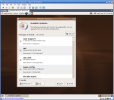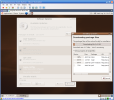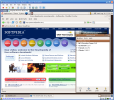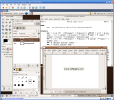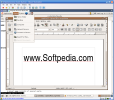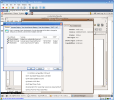Before anything else, I must say that the title of this review could have been ?1001 Computers in One?, but for most users, having two in one at the same time should be enough. How can this be possible? The keyword that opens the gates now is ?virtualization?, so let's find out more about this before moving on and engaging today's target, shall we?
Virtualization is a term so hot and used with so many meanings, that when you try to define it you have to isolate its use to a very limited context. We could talk about software or resource virtualization, but today I will dig in deeper into the software area to find what I am looking for...
Virtual machines are used to simulate a full set of computer hardware on a host computer (think about another computer inside your PC, and you got the main idea), and there are several approaches to this task. Emulation, paravirtualization, full virtualization and operating system-level virtualization are only some of these ways to accomplish the simulation purpose that I just told you about.
Today's target is VMware Workstation, a full virtualization software that lets you run almost any operating system that you can think of (except MacOS) inside your Windows (a Linux version is also available and the MacOS one will be released soon, but they are not my problem now).
The current version is 5.5.2 and you can get a 30 days trial for free. All you have to do for that is to register on the producer's website in order to get a trial serial number. The installation kit has 85MB in size, the setup process is easy to follow using the on screen information that you get, and if you don't know exactly which options to choose, the defaults will be just fine, since everything can be changed later.
When starting up the program for the first time, you will yourself face the Home page, located inside an excellent interface. There's not much to say about it, since this is the last thing that you'll do, because you'll be busy playing with your operating systems using the virtual machines that you have set up. This leads us to the creation and configuration of a new virtual machine, so prepare for this step...
The operating system that I will install inside my new virtual machine is a Linux distribution called Ubuntu, and the source that I use is an installation CD, but VMware Workstation also allows you to use ISO images. These being said, let's see ?how?, since ?what? is already known.
Creating a new virtual machine is very easy, because you will be guided by a wizard all along the way. To start the process, you can use the File>New>Virtual Machine menu item, the Ctrl+N keyboard shortcut or, the easiest way, click the button from the Home page, you can't miss it!
From the Virtual machine configuration screen you can choose the typical configuration or a custom one, but only if you need to have additional devices or specific configuration options. For anyone using this program for the first time, the default one shouldn't be a problem, because it worked fine for me, you're going to see...
After you hit the Next button, you are dropped inside the Guest operating system screen, where you have to choose the type and version of the operating system you want to install inside the virtual machine you are creating. The options available here cover virtually any OS out there, from Microsoft Windows, Linux, Novell NetWare and Sun Solaris to the old MS-DOS and generic 32 and 64-bit systems.
The machine we're creating starts to have a shape now, and the next step is to give it a name and address. There are two things that need to be entered in this step of the wizard, the name of the machine and the folder on your hard drive where you want to save its files.
Although it won't run inside a real computer, the guest operating system can use your physical's machine connection to link to the outside world, or at least your local network. The Network Type screen allows you to choose the way your virtual machine connects to the Internet and local network, and I suggest you to ask somebody who knows what to choose, if you are not sure about your choice. Of course that if you don't get things right now, you'll be able to change them later, but better be quick than be late.
We have the name, location, the network options are behind...I guess that we need a virtual disk drive for our virtual machine now, don't we? Next step enables us to set the size of the virtual disk and choose how to allocate disk space for it. The 2GB file split option should be used only if you really need it, since the opinions on this topic that I found on the Internet didn't lead me to a clear conclusion.
All these steps being completed, the machine can be powered on. You can even access the virtual BIOS(!!) using the F2 key, which is a good thing to know, maybe you need to perform any changes there...Your installation CD or ISO image will load and you can start setting up your first guest operating system!
The good part is that you don't have to look at the setup screen all the time, because getting in and out of the virtual machine is a task very easy to perform, you just have to click inside the virtual screen and you're there, while for releasing the mouse and keyboard control back to Windows, you have to use the Ctrl+Alt keyboard shortcut. Pretty easy, isn't it?
I don't have to tell you more about using the guest operating system of your choice, because everybody should have its toy and I am not the one to teach about their use. What I want to do now is to get back to the main program and point out some of the remaining features, leaving some for you too, don't worry!
If you want to return later to the current state of your virtual machine, you can take a snapshot at any time. To help you track your changes better, VMware Workstation has a Snapshot Manager included that can be started easily using the Ctrl+M shortcut.
Teams is a feature that allows you to group more virtual machines and so create a virtual computer lab. Leaving the details aside, the short version is that teams can be used for virtualizing network performance and security, multitier and multiple-machine testing environments. These are tasks that home users won't get to perform any time soon, since the memory and CPU resources required by multiple virtual machines can get really high.
The hard drives of your virtual machines can be defragmented, machines can be cloned, powered on, off, suspended and so on. The virtual screens can be captured as still pictures, but you can even capture movies, this making the program useful for full motion tutorials about guest operating systems.
The documentation of this program is extremely detailed and can guide you all the way into VMware Workstation's mysteries that I leave for you to discover, since now it's time for me to move on and draw the conclusions.
The Good
The good parts about VMware Workstation go way beyond its ease of use and rich feature list, but for the home users these two are enough.
You get a program that lets you experience a dozen Linux distros without a single format or partitioning of your hard drive, and that's great. System integrators and network specialists can simulate entire computer networks before deploying the real things, for example.
The 30 days trial period should be enough for everyone to play with a couple of operating systems and decide if further play is worth the price, while the comprehensive Help content adds another white ball to the ones already here.
The Bad
I guess that for home users the worst things about this program are the price and the system resources required to be able to run more than a guest system at full speed, while corporate users shouldn't have any of these problems. Of course that minor issues exist, like the lack of 3D acceleration and USB 2.0 support, but they are not enough to shadow the excellent features that we have here.
The Truth
VMware Workstation is the most popular virtual machine software, and this has a good reason ? the program itself. All you have to do is to download, install and run it, you will understand why? I say no more, but let the screenshots speak instead...
 14 DAY TRIAL //
14 DAY TRIAL // 




















